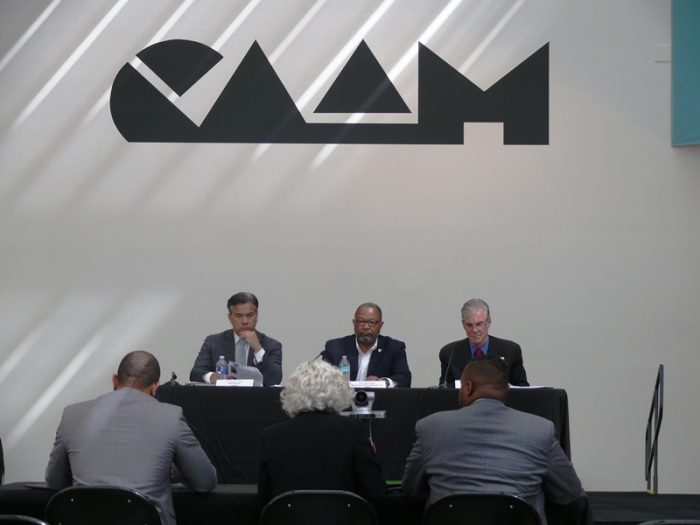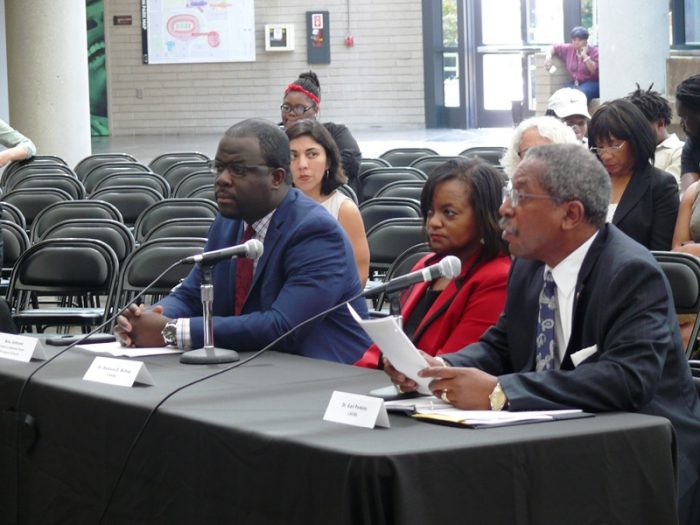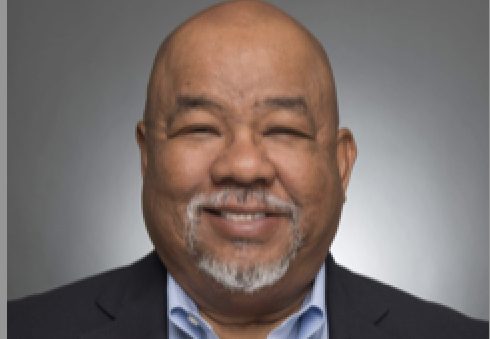
On July 29, the Assembly Select Committee on the Status of Boys & Men of Color in California (ASCSBMCC) convened at the California African American Museum (CAAM) for a briefing to discuss whether the education system is addressing the needs of boys and men of color in California. The Capitol and regional hearings focused on ending mass incarceration, increasing equity in education, police accountability, integrating undocumented boys and men of color and improving school climate.
The ASCSBMCC, chaired by Assemblymembers Reginald Jones-Sawyer, Sr. (D-Los Angeles), Rob Bonta (D-Oakland) and joined with Tom Torlakson, Superintendent of the State of California, met with panels in Los Angeles to discuss the disparities and inequities in access, opportunity, and achievement for boys and men of color in California.
The panels included Dr. Earl Perkins (LAUSD, Associate Superintendent, District Operations), Dr. Ramona E. Bishop (California Association of African-American Superintendents and Administrators, President), Alex Johnson (Children’s Defense Fund Freedom Schools, Executive Director), Matthew Smith (California State University Dominguez Hills, Male Success Alliance), Julie Sinai (Roberts Enterprise Development Fund, Policy Director), Jeffery Wallace (LeadersUp, President), George Weaver (Brotherhood Crusade, Consultant), Leticia Barajas (Los Angeles Trade Technical College, Vice President) and Betty Hung (Asian American Advancing Justice, Policy Director).
The meeting addressed a number of issues that affect men and boys of color including teacher qualifications and hiring, disciplinary issues within high schools and graduation rates among other issues. The panels presented issues before the ASCBMCC members which were addressed before representatives and the public who attended the meeting.

Bishop spoke on one of the panels stressing the importance of teachers and the important roles they play in the lives of their students. She feels it is important for the community to be involved in these meetings.
“Attending board meetings, if they have a child at a local school, they should be attending those school site council meetings, where a lot of decisions are made around money,” said Bishop.“Often, are communities are absent from the table and therefore those fundings, those expenditures are going somewhere else and not to our kids.”
She also addressed how she would like the ASCBMCC to focus some of their attention.
“I really think [ASCBMCC] have to consider teacher quality and training,” said Bishop, “making teaching easy for people who already have a bachelor’s degree.
“We have a lot of young people who have come back to our community and now they’ve decided that they want to be a teacher, after going to college and they just need help funding that.”
“Young people are not seeing the myriad of career pathways that exist across the private sector,” said Wallace during a panel discussion.
“There is a fundamental disconnect between educators in the private sectors around the importance of them participating in this system as a talent developing agent rather than just an educator.”
Jones-Sawyer talked about something he saw before attending the briefing that he felt shed light on the important work the ASCBMCC must continue.
“I walked passed a mother and son, an African American boy, and I overheard the young boy say, as he’s eating his burrito, ‘Is this my dinner? Is this all I’m going to eat today?’”
“And I almost stopped and didn’t come in here because of that and thought about all the nourishment that an individual could have but not just the nourishment through food. I was thinking you have [CAAM] here, the Science Center, the Natural History Museum, we have so many things that young boy, young man could also get nourishment from and all he cares about is his basic needs.
“We’re not addressing the mental needs of our young boys and men of color.”
Established in 2011, by former speaker John A. Perez and chaired by then Assemblymember Sandré Swanson, the inaugural Committee partnered with the Alliance for Boys and Men of Color to engage more than 2,000 youth, community members, and system leaders in an 18-month process that culminated in the development of ambitious Policy Platform for State Action (2012-2018). Since then, the presence and the influence of the committee has grown, resulting in the unprecedented participation of 22 assemblymembers starting 2015, representing diverse districts across the state.
For more information, please visit http://assembly.ca.gov/statusofboysandmenofcolor







